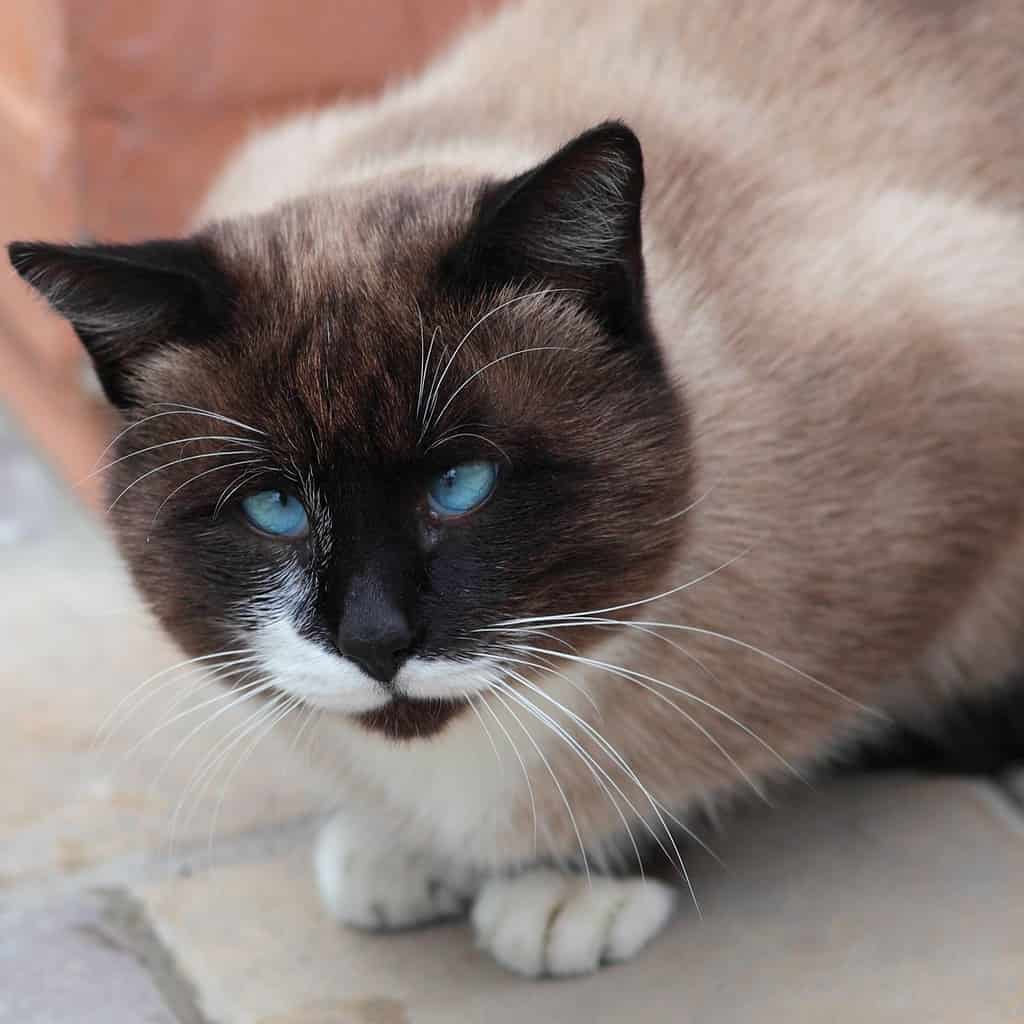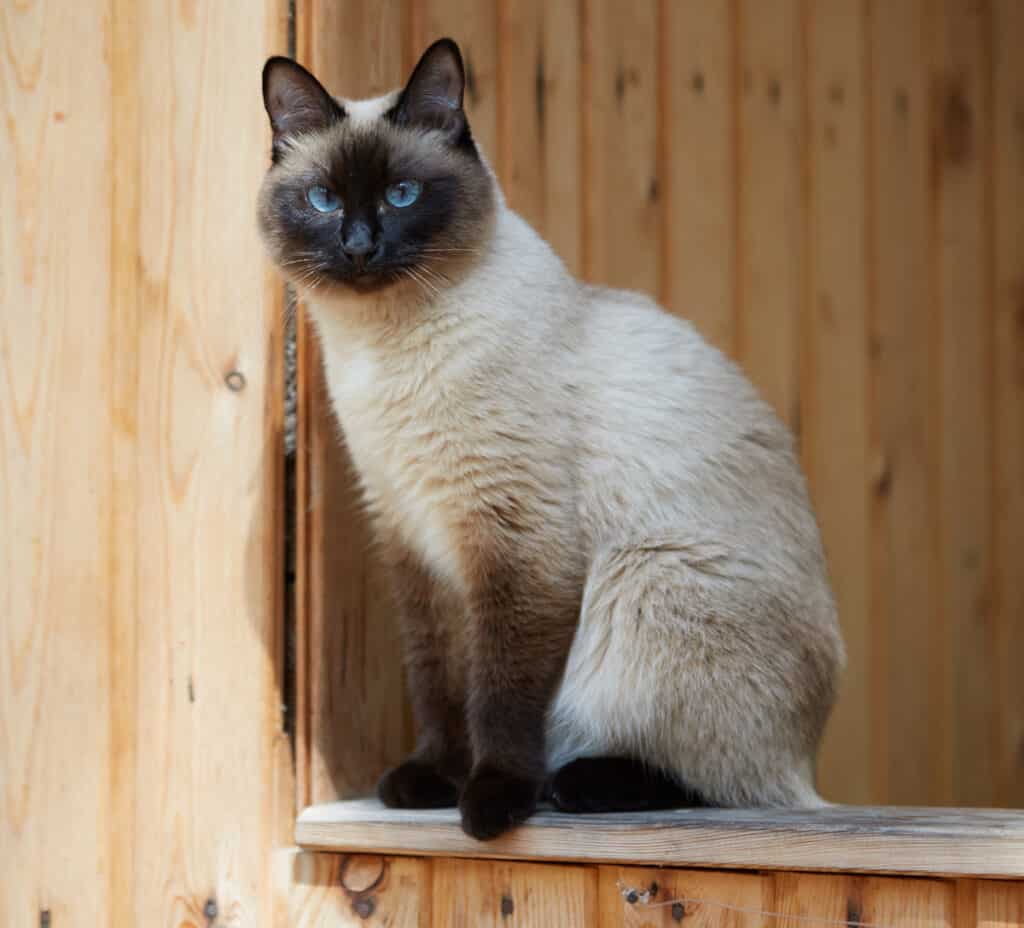Siamese cats are known for their brilliant blue eyes, creamy body, and colorpoint legs, ears, face, and tails. Another attribute commonly found among Siamese cats is the occurrence of being cross-eyed.
Cross-eyed is a genetic trait linked to being colorpoint
The cross-eyed trait, scientifically known as strabismus, has a genetic underpinning. Siamese cats’ unique color points—their dark ears, face mask, paws, and tail—are the result of a temperature-sensitive enzyme affecting the production of pigment in their fur. This enzyme is most active at cooler body temperatures, causing the extremities to be darker than the warmer central body.
The same gene responsible for this color differentiation, called the “albino” or “Himalayan” gene, also impacts the neural wiring between the eyes and the brain in some Siamese cats. Here lies the connection between the Siamese cat’s color points and its cross-eyed demeanor.
The optic chiasm is a crucial structure in the vertebrate visual system where the optic nerves from both eyes converge and then partially cross to the opposite side. In Siamese cats, the optic chiasm wiring is abnormally uncrossed.

Crossed fibers in the brain results in the cross-eyed look in Siamese cats
For most cats, a layer of nerve fibers takes visual information from the retina and sends it to the opposite side of the brain. This phenomenon ensures that the left visual field of both eyes is processed by the right side of the brain, and vice versa. However, in some Siamese cats, due to the influence of the aforementioned gene, more nerve fibers than usual may cross from one side to the other. This misrouting can cause the cat to see double or misjudge distances.
To compensate for this, the cat may turn its eyes inward, leading to the characteristic cross-eyed appearance. This adaptation actually helps the Siamese cat align its field of vision properly, reducing double vision.
Generally, the cross-eyed appearance in Siamese cats is not associated with any detrimental health effects. These cats are usually as capable of leading healthy lives as any other cat. They adapt to their unique vision setup and don’t show signs of discomfort or confusion due to their crossed eyes.

Breeding out cross-eyed in Siamese cats
Over the past few decades, breeders have made efforts to breed out the cross-eyed trait in Siamese cats for aesthetic reasons. Through selective breeding, the frequency of strabismus has reduced in the Siamese population. Breed standards from cat fancier organizations like sfa.org required uncrossed eyes for showing with Siamese cats.
Today, many Siamese cats do not display the cross-eyed trait, although it can still occasionally be seen.
References
Bowling, S. A. (1987, August 31). We are Siamese if you please. Geophysical Institute. https://www.gi.alaska.edu/alaska-science-forum/we-are-siamese-if-you-please
Hubel, D. H., & Wiesel, T. N. (1971). Aberrant visual projections in the Siamese cat. The Journal of physiology, 218(1), 33-62.
Rengstorff, R. H. (1976). Strabismus measurements in the Siamese cat. Optometry and Vision Science, 53(10), 643-646.






